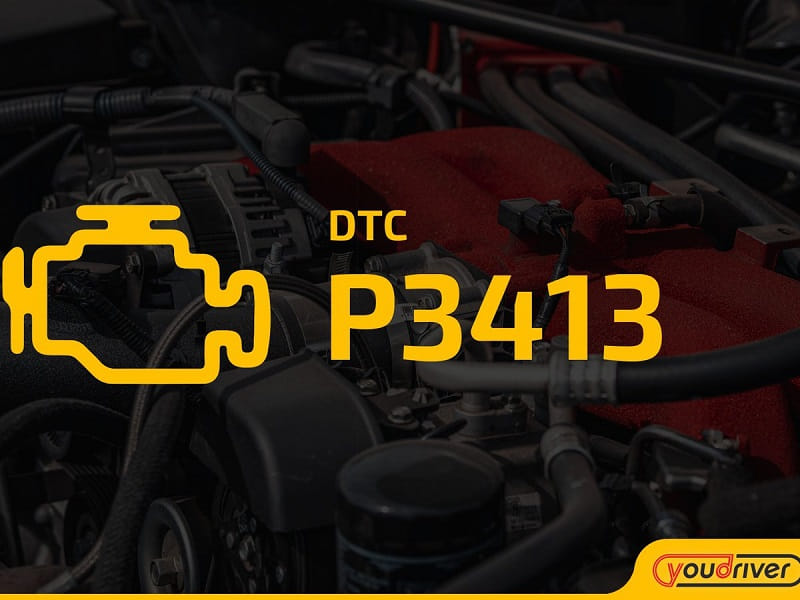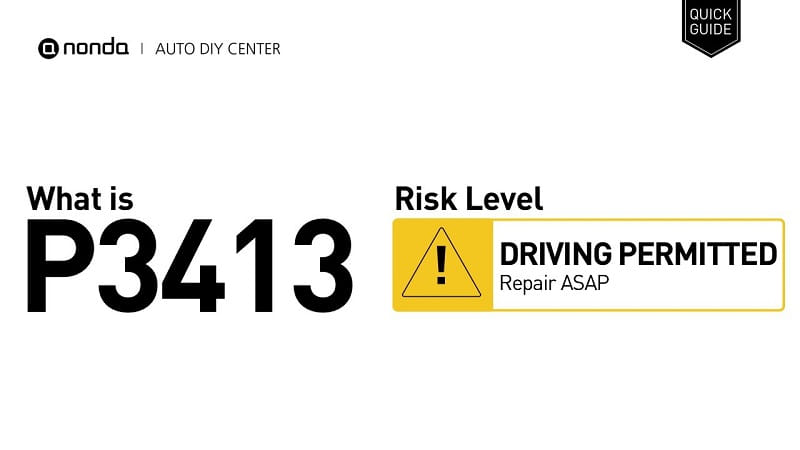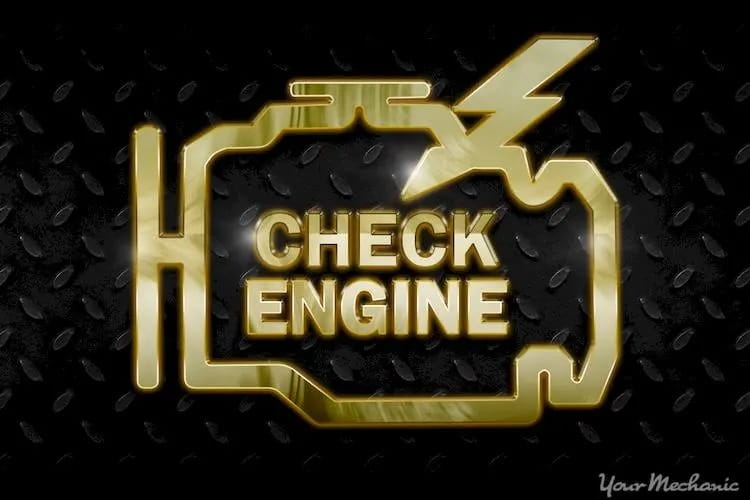This post contains affiliate links. This means I will make a commission at no extra cost to you should you click through and make a purchase [ “As an Amazon Associate, I earn from qualifying purchases.” ]. Read the full disclosure here.
Understanding Diagnostic Trouble Code P3413: Cylinder 2 Exhaust Valve Control Circuit/Open GuideMechanic.Com As automotive technology continues to evolve, modern engines have become more intelligent and efficient through the integration of complex systems such as variable valve timing (VVT) and cylinder deactivation technologies.
These systems are designed to optimize engine performance, reduce fuel consumption, and minimize harmful emissions.
However, with this complexity comes the possibility of system malfunctions, which are typically reported to the driver through the Check Engine Light (CEL) and stored as Diagnostic Trouble Codes (DTCs).
One such code is P3413 – Cylinder 2 Exhaust Valve Control Circuit/Open. This code relates to a problem with the electrical circuit controlling the exhaust valve for cylinder number 2.
In this article, we will explore what this code means, its symptoms, causes, diagnosis process, and how it can be effectively repaired.
See Also: P3414 Cylinder 2 Exhaust Valve Control Circuit Performance
P3413 Cylinder 2 Exhaust Valve Control Circuit/Open
What Does Code P3413 Mean?

Code P3413 indicates that the Powertrain Control Module (PCM) or Engine Control Module (ECM) has detected an open electrical circuit in the exhaust valve control system for cylinder 2.
This means the signal that controls the actuation of the exhaust valve is not completing its path, which can disrupt proper exhaust valve operation and negatively impact engine performance.
This code is most commonly found in vehicles equipped with cylinder deactivation or Variable Valve Timing (VVT) systems, such as those produced by General Motors, Honda, Chrysler, and others.
These systems often rely on oil pressure and electronically controlled solenoids to actuate intake and exhaust valves under certain engine conditions.
An “open circuit” means that the control module cannot detect any current flow in the exhaust valve actuator’s electrical circuit, which typically results from a disconnected wire, failed solenoid, or bad connector.
P3413 Cylinder 2 Exhaust Valve Control Circuit/Open
Symptoms of P3413
The presence of the P3413 code can lead to various symptoms, depending on the vehicle and the severity of the fault. Common symptoms include:
- Illuminated Check Engine Light (CEL): The most common and immediate indication.
- Rough Engine Idle: An improperly functioning exhaust valve can lead to poor combustion and rough idle.
- Engine Misfire: Especially in cylinder 2, due to incorrect exhaust valve timing.
- Reduced Engine Power: The engine may run in a protective mode, decreasing performance.
- Increased Emissions: Incomplete exhaust strokes can increase hydrocarbon emissions.
- Decreased Fuel Efficiency: Malfunctioning valves can disrupt the engine’s air-fuel balance.
P3413 Cylinder 2 Exhaust Valve Control Circuit/Open
What Causes Code P3413?
Several possible causes can lead to an open circuit in the cylinder 2 exhaust valve control. The most common include:
- Faulty Exhaust Valve Control Solenoid (Cylinder 2): Internal failure may prevent the solenoid from completing the electrical circuit.
- Open or Damaged Wiring Harness: Breaks, cuts, or chafed wires leading to the solenoid can cause an open circuit.
- Corroded or Loose Electrical Connectors: Water or dirt ingress can cause corrosion that interrupts the electrical flow.
- Defective Powertrain Control Module (PCM): Rarely, a fault in the PCM’s internal circuitry may cause a failure to energize the circuit.
- Low or Dirty Engine Oil: Since many valve control systems use oil pressure to actuate valves, poor oil condition may lead to improper operation, although it is not usually the primary cause of this code.
P3413 Cylinder 2 Exhaust Valve Control Circuit/Open
Diagnosing Code P3413

Proper diagnosis is essential to accurately identify and repair the fault. Here’s a step-by-step diagnostic procedure for code P3413:
Step 1: Scan for Codes
Use a professional OBD-II scan tool to retrieve the P3413 code.
Check for any related codes (e.g., misfire codes like P0302 or other cylinder-specific DTCs) which may provide additional insight.
Step 2: Perform a Visual Inspection
Inspect the wiring and connectors around the cylinder 2 exhaust valve control solenoid.
Look for frayed wires, corrosion, disconnected plugs, or oil contamination.
Step 3: Test the Solenoid
Using a digital multimeter, measure the resistance of the solenoid.
Compare the reading to factory specifications. An infinite or zero resistance may indicate an internal fault or open circuit.
Step 4: Check Circuit Continuity
With the ignition off, test for continuity in the control circuit from the solenoid to the ECM.
Open circuits will show no continuity and may require wiring repairs.
Step 5: Check for Voltage at the Connector
Turn the ignition on and measure the voltage at the solenoid connector.
Ensure the ECM is supplying the proper control voltage.
Step 6: Test the ECM (if needed)
If wiring and solenoid check out, the issue may lie within the ECM’s control output.
This should be diagnosed by a professional with manufacturer-specific tools.
P3413 Cylinder 2 Exhaust Valve Control Circuit/Open
How to Fix Code P3413
After completing the diagnosis, the necessary repairs will depend on the specific issue discovered. Common solutions include:
- Replace the Exhaust Valve Control Solenoid (Cylinder 2)
If found faulty, replacing the solenoid is often a straightforward solution.
- Repair or Replace Wiring Harness
Fix any damaged or broken wires found during the inspection and test for proper continuity.
- Clean or Replace Electrical Connectors
Clean corrosion with electrical contact cleaner or replace the connector if damage is significant.
- Replace or Reprogram the PCM (if necessary)
If the PCM is the confirmed source of the issue, it may need to be reprogrammed or replaced.
- Change Engine Oil
If oil is dirty or low, an oil change with the correct grade can help ensure proper valve operation.
P3413 Cylinder 2 Exhaust Valve Control Circuit/Open
Preventing Future P3413 Codes

While some faults are unavoidable, many can be prevented through regular maintenance. Here are some helpful preventive tips:
- Use the Right Engine Oil: Always use manufacturer-recommended oil types and grades.
- Change Oil Regularly: Clean oil is essential for systems that rely on hydraulic pressure.
- Inspect Wiring During Maintenance: Check connectors and wires for wear or corrosion at regular service intervals.
- Avoid Aftermarket Modifications: Aftermarket engine control systems or parts may interfere with factory valve control systems.
- Keep the Engine Bay Clean: Prevent debris and moisture from affecting sensors and wiring.
P3413 Cylinder 2 Exhaust Valve Control Circuit/Open
Final Thoughts
The P3413 – Cylinder 2 Exhaust Valve Control Circuit/Open trouble code is a specific but critical fault that points to an issue with the exhaust valve actuation system in one of the engine’s cylinders. Left unresolved, it can lead to performance issues, fuel inefficiency, misfires, and increased emissions.
By understanding the code’s meaning, symptoms, and causes, you or your technician can take informed steps toward accurate diagnosis and effective repair.
While the electrical nature of this fault may seem intimidating, following a structured approach—starting with basic visual inspection and moving through systematic testing—can often reveal the source of the issue quickly.
Timely maintenance, high-quality components, and routine inspections can help prevent this code and keep your engine running efficiently for years to come.
- 4×4 Truck for Sale Used - October 21, 2025
- 4×4 Truck for Sale Under 20K - October 15, 2025
- 4×4 Truck for Sale QLD - October 12, 2025
